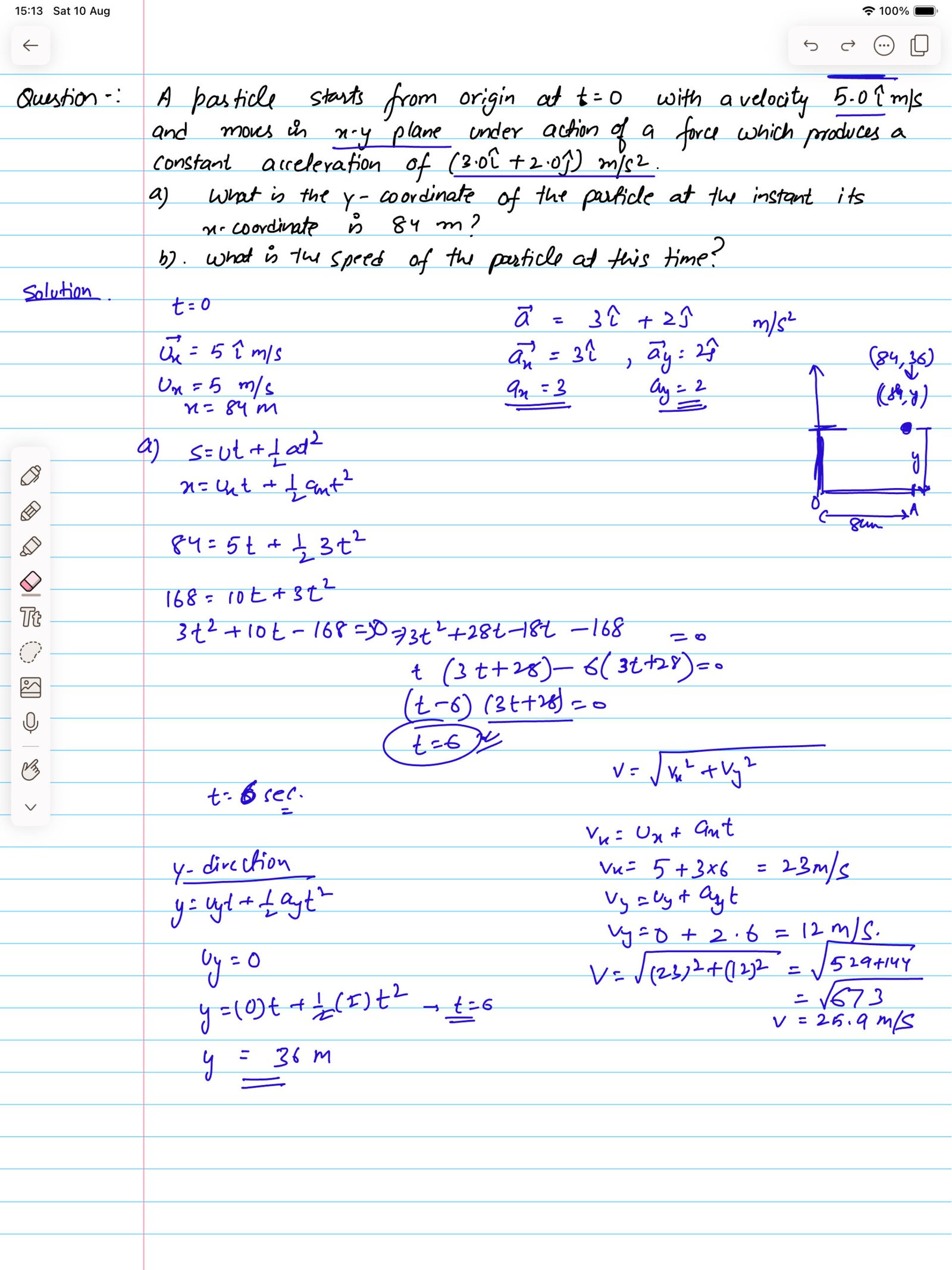Vectors
2 Videos

7:00

16:35
Vector Questions Physics
Question 1 : The greatest and least resultant of two forces acting at a point is 10 N and 6 N respectively. If each force is increased by 3 N, find the resultant of new forces when acting at a point at an angle of 90 degree with each other.
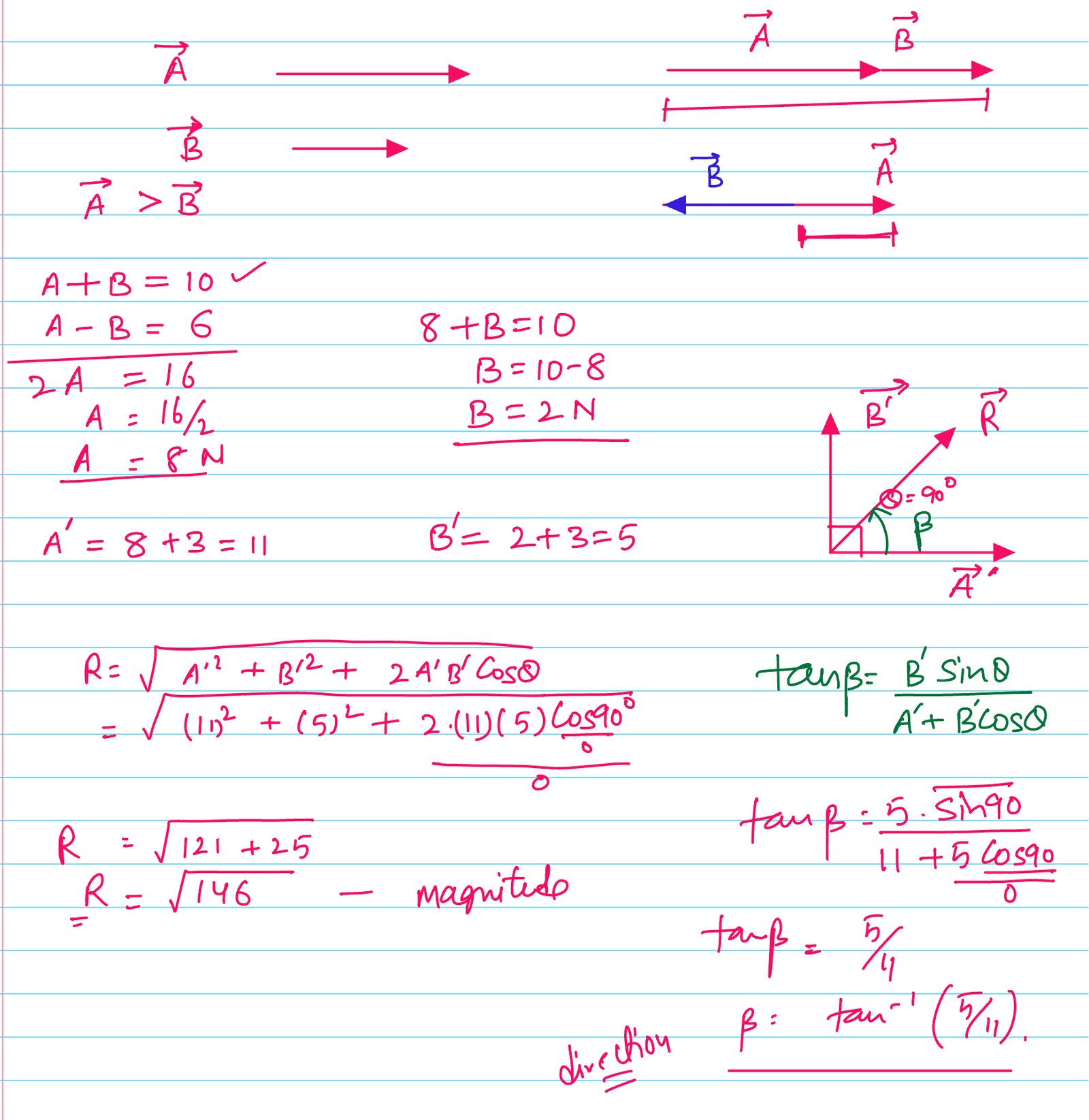
Question 2 : The sum of the magnitudes of two forces at a point is 18 N and the magnitude of their resultant is 12 N. If the resultant makes an angle of 90 degree with the force of smaller magnitude, find the magnitude of two forces.
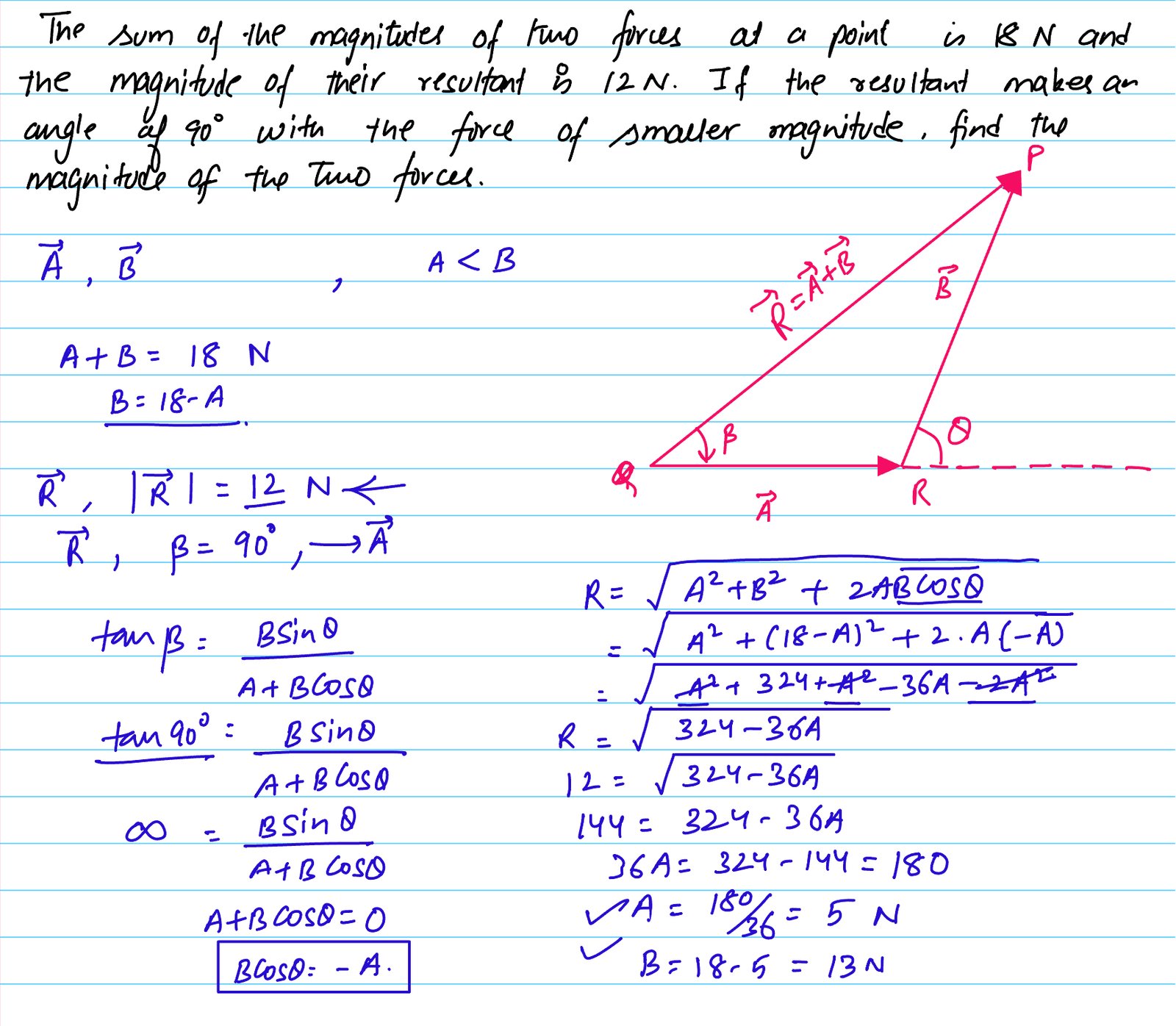
Question 3 : Determine the horizontal force required to displace a mass of 0.03 kg suspended by a string untill the string makes an angle of 30 degree with the vertical.
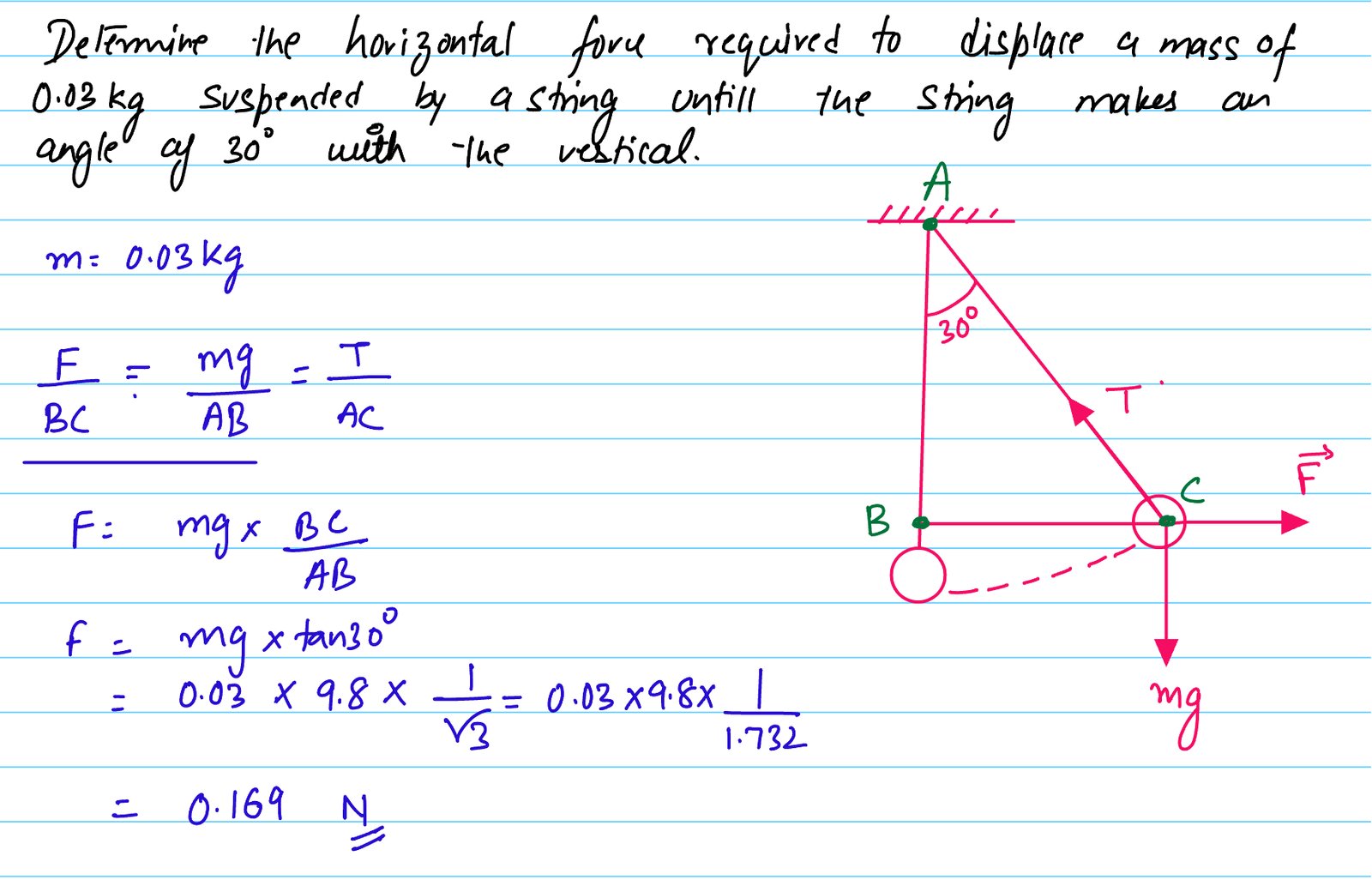
Question 4 : A car travelling at a speed of 30 m/s due north along the highway makes a left turn on to a side road which heads towards west. It takes 40 seconds for the car to complete the turn. At the end of 40 seconds, the car has a speed of 20 m/s along the side road. Determine the magnitude of average acceleration over the 40 seconds interval.
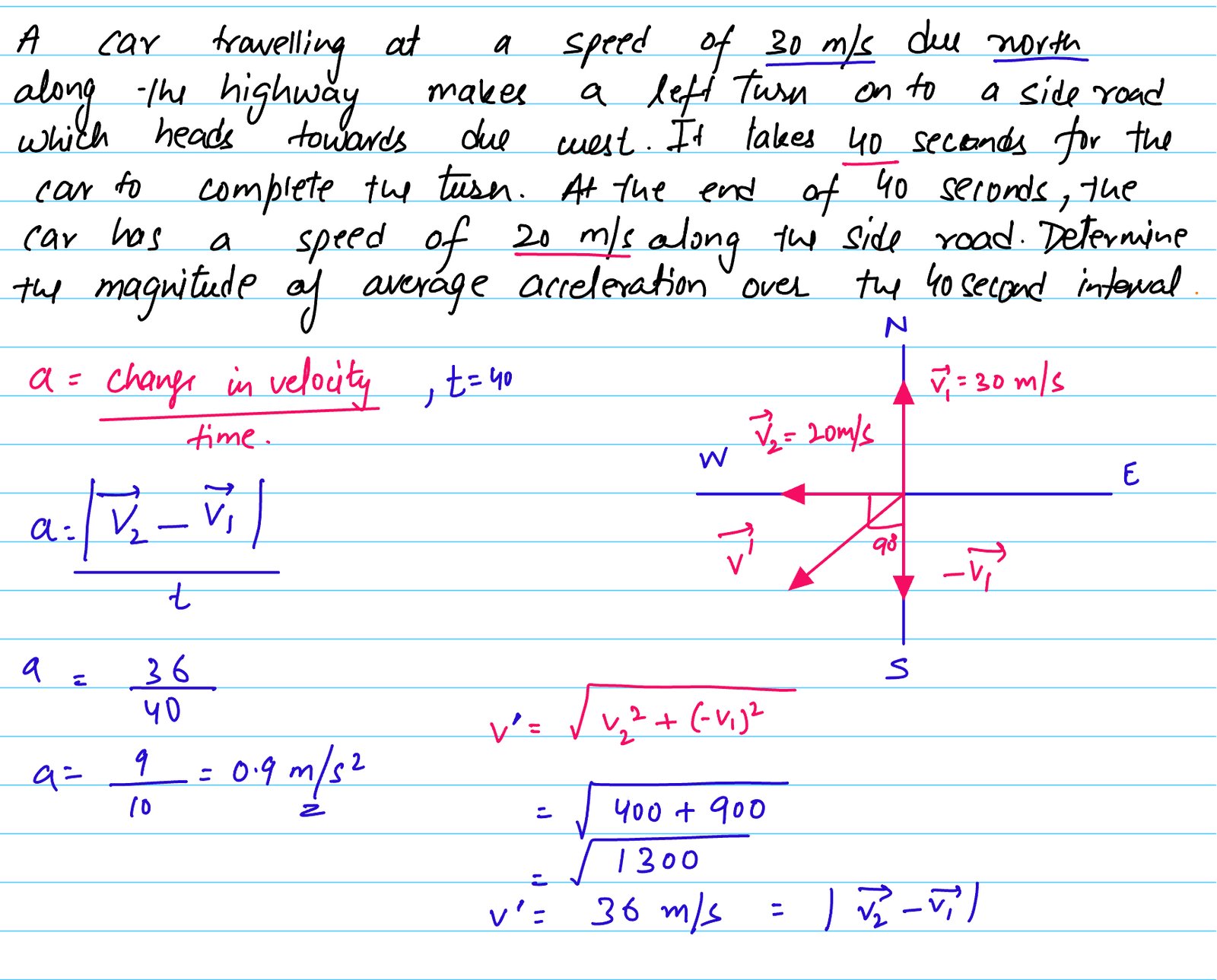
Question 5 : Rain is falling vertically with a speed of 35 m/s. A woman rides a bicycle with a speed of 12 m/s in east to west direction. What is the direction in which she should hold her umbrella ?
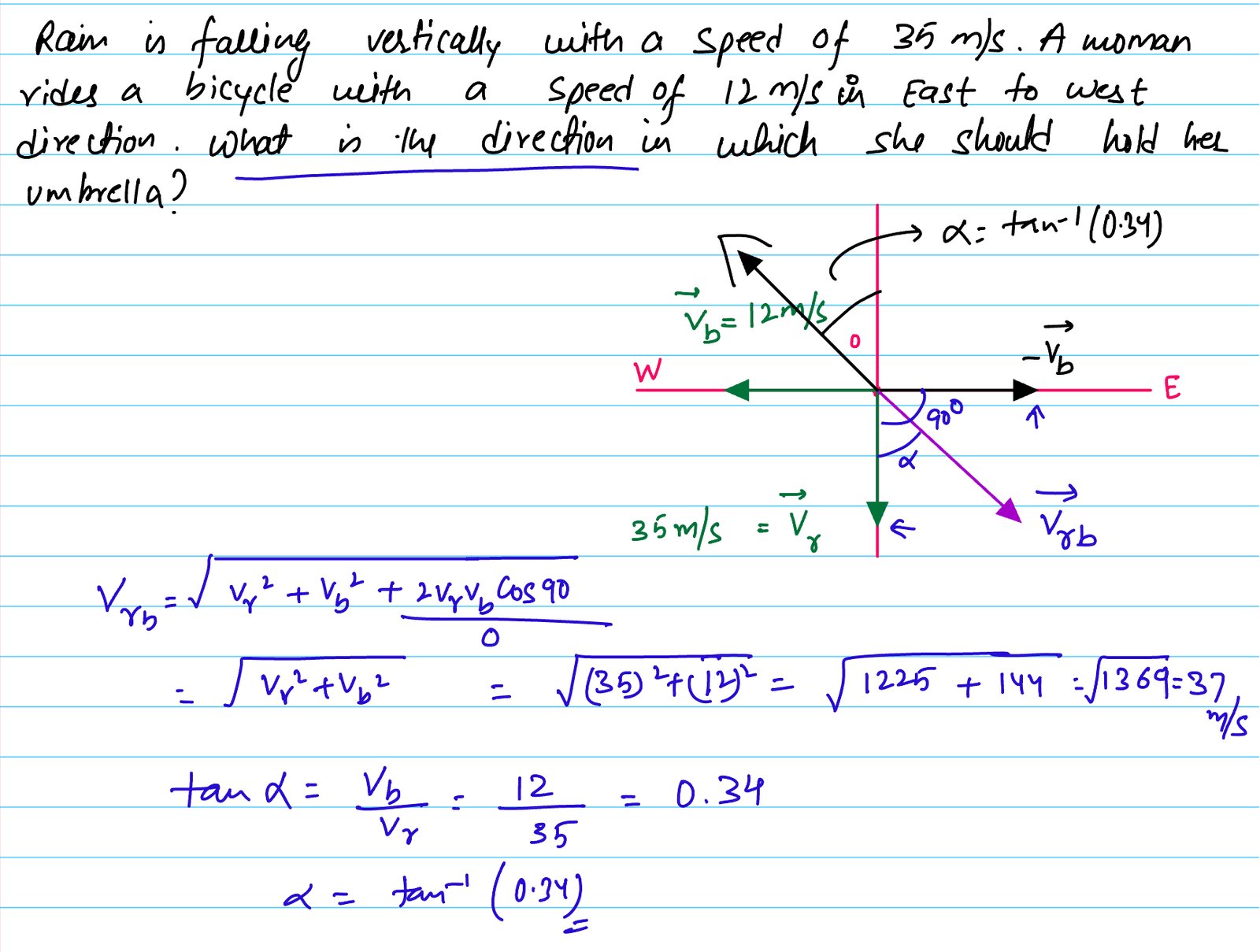
Question 6 : To a person going east in a car with a velocity of 50 km/hr, a bus appears to move towards north with a velocity of 50 square root 3 km/hr . What is the actual velocity and direction of motion of the bus ?
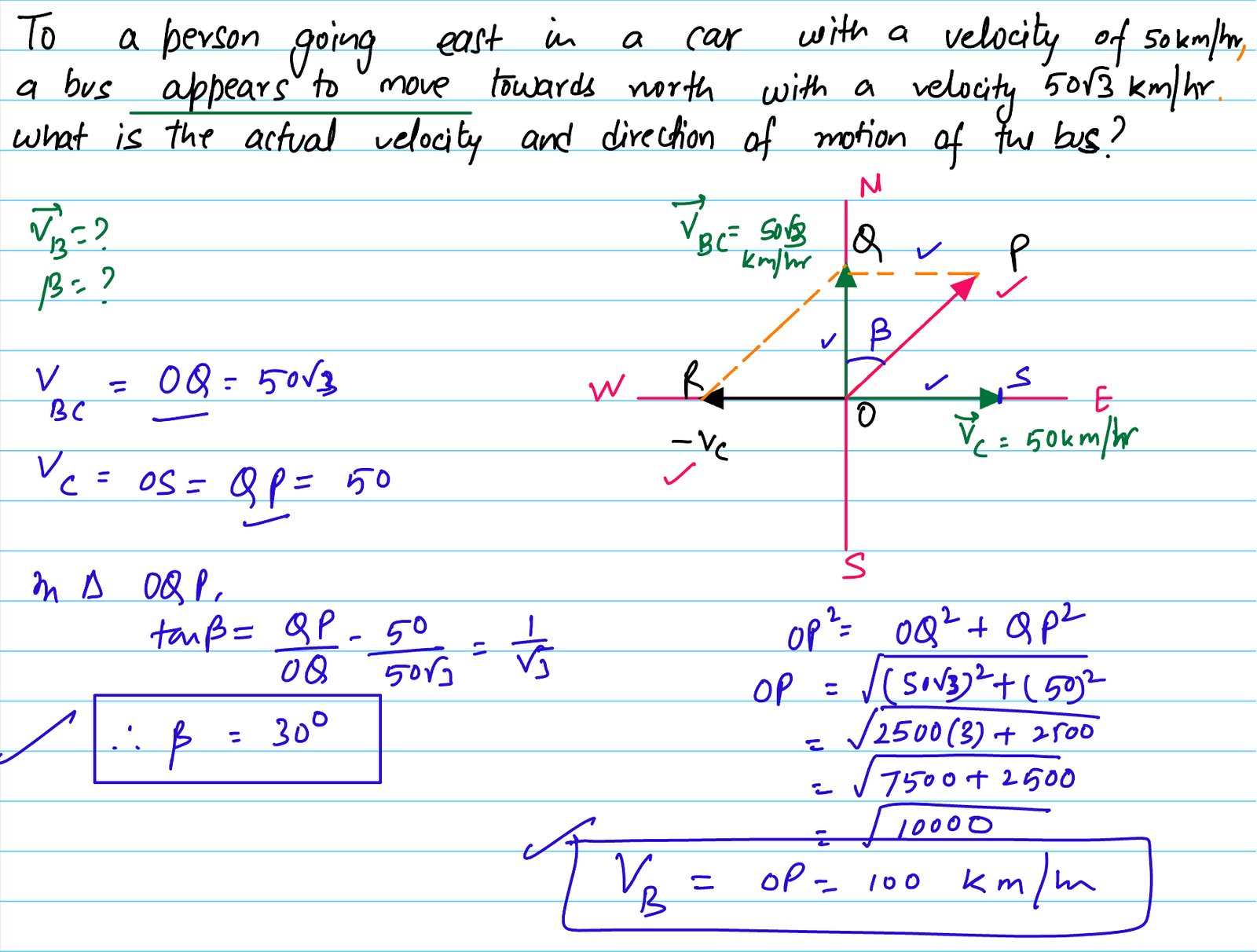
Question 7 : A ball is acted upon by the following velocities :
i). 3m/s due east
ii). 11 m/s due south
iii). 5 square root 2 m/s due north east
Find the magnitude and direction of the resultant velocity.
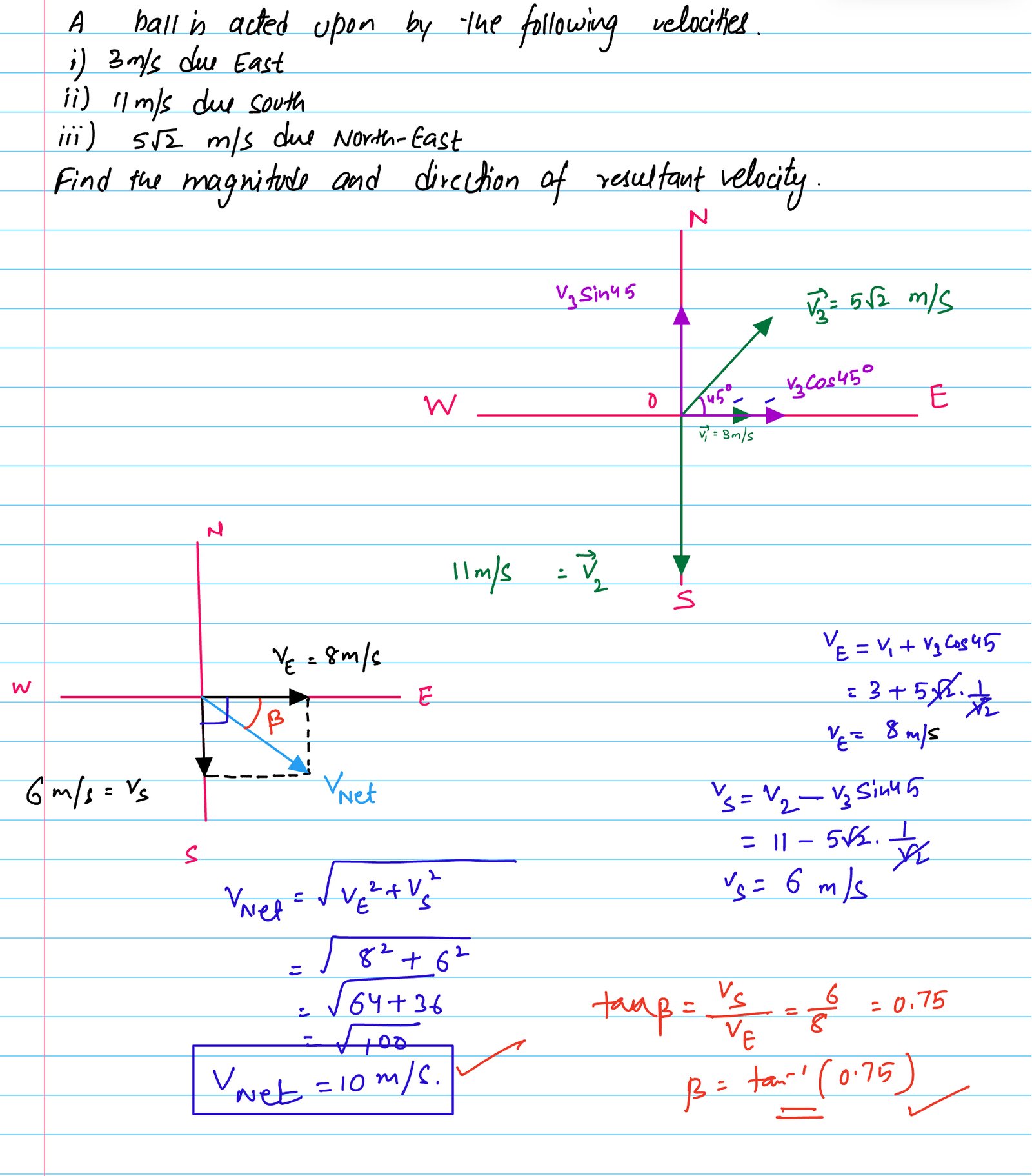
Question 8 : What is the distance travelled by a point during the time t, if it moves in X-Y plane, according to the relation, x = a sinwt and y = a ( 1 - coswt ) ?
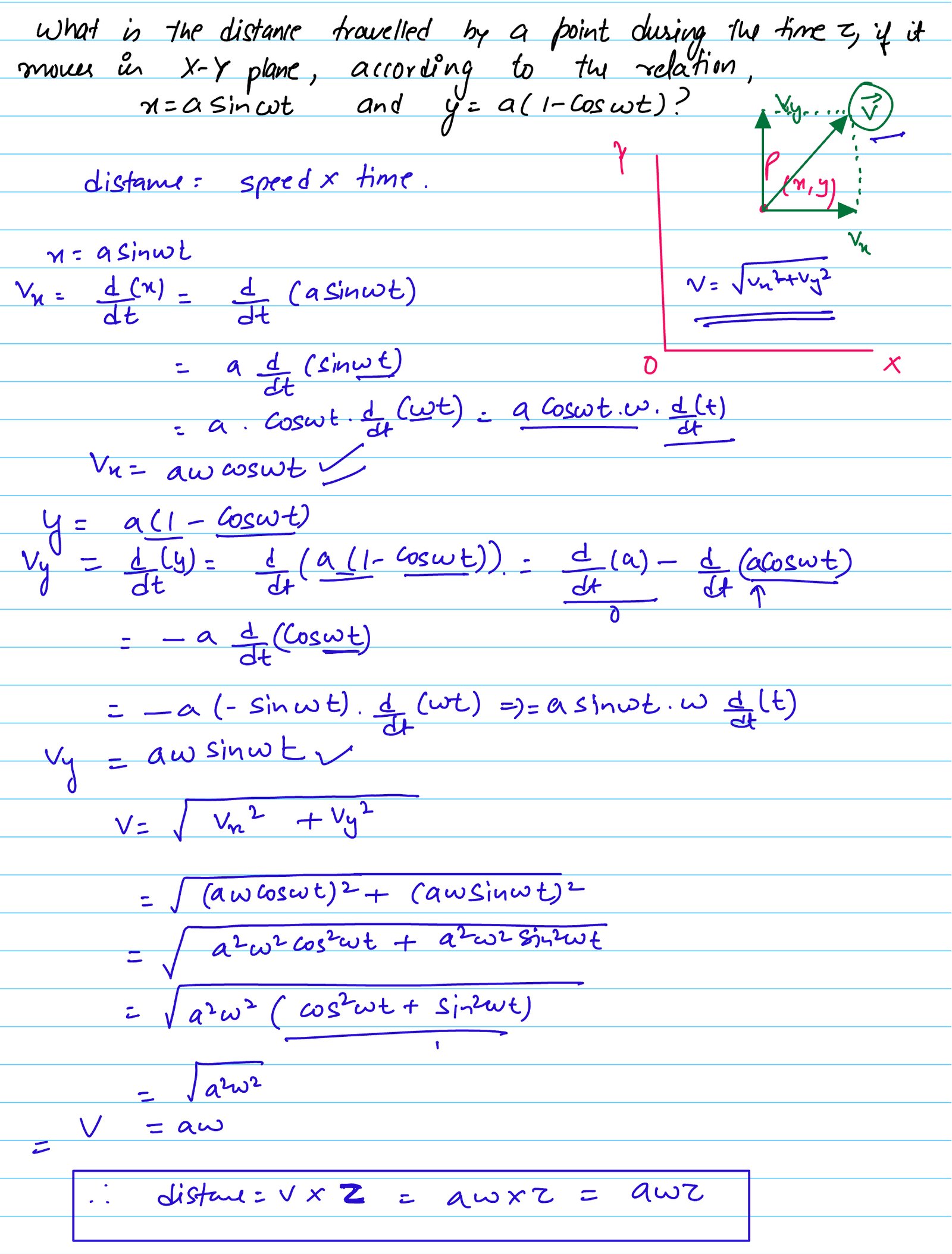
Question 9 : If vector A = 3 i + 4j and vector B = 7i + 24j, find a vector having the same magnitude as vector A and parallel to vector B
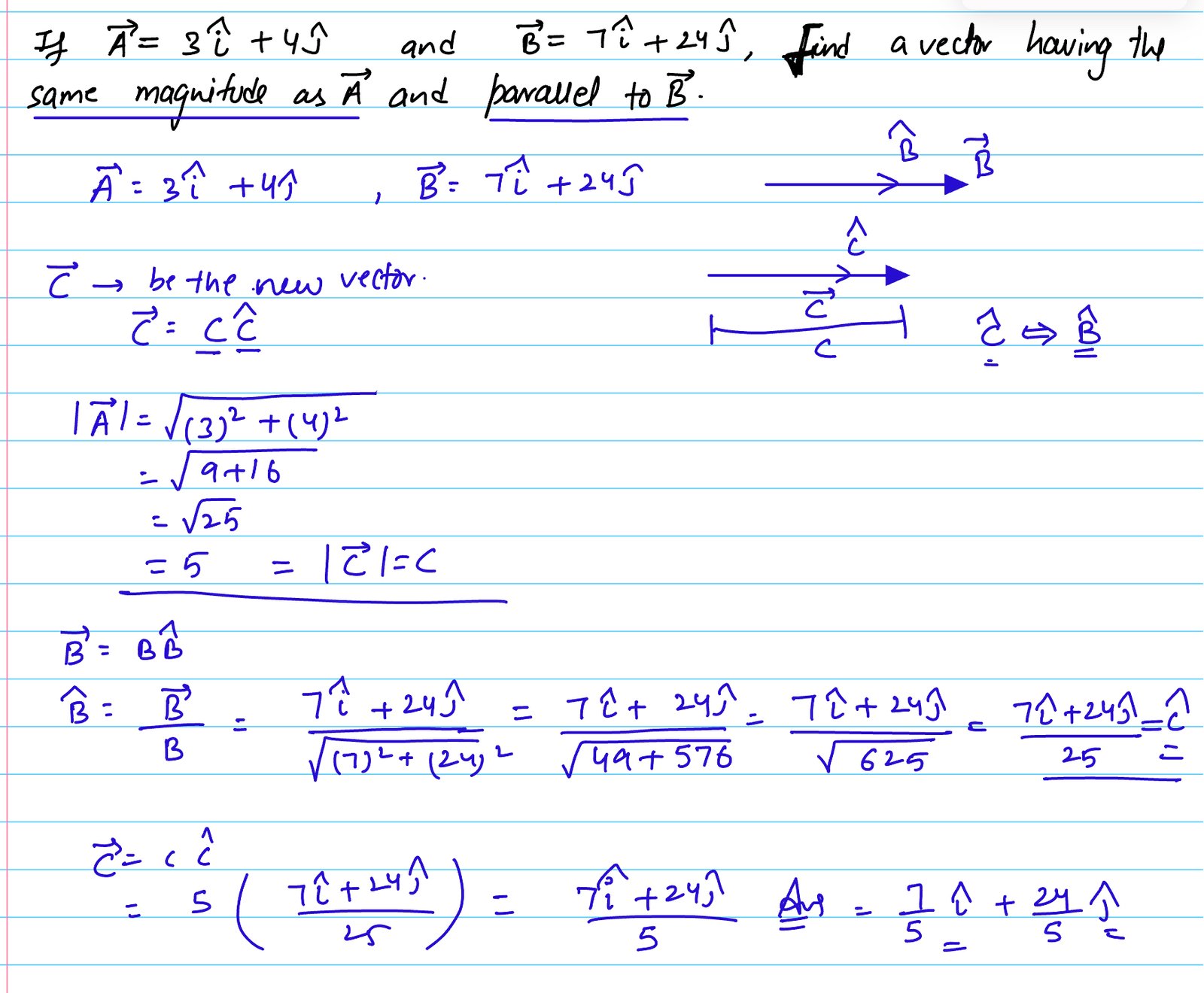
Question 10 : Find the component of vector A = 3i + 4j along the direction of 2i - 3j .
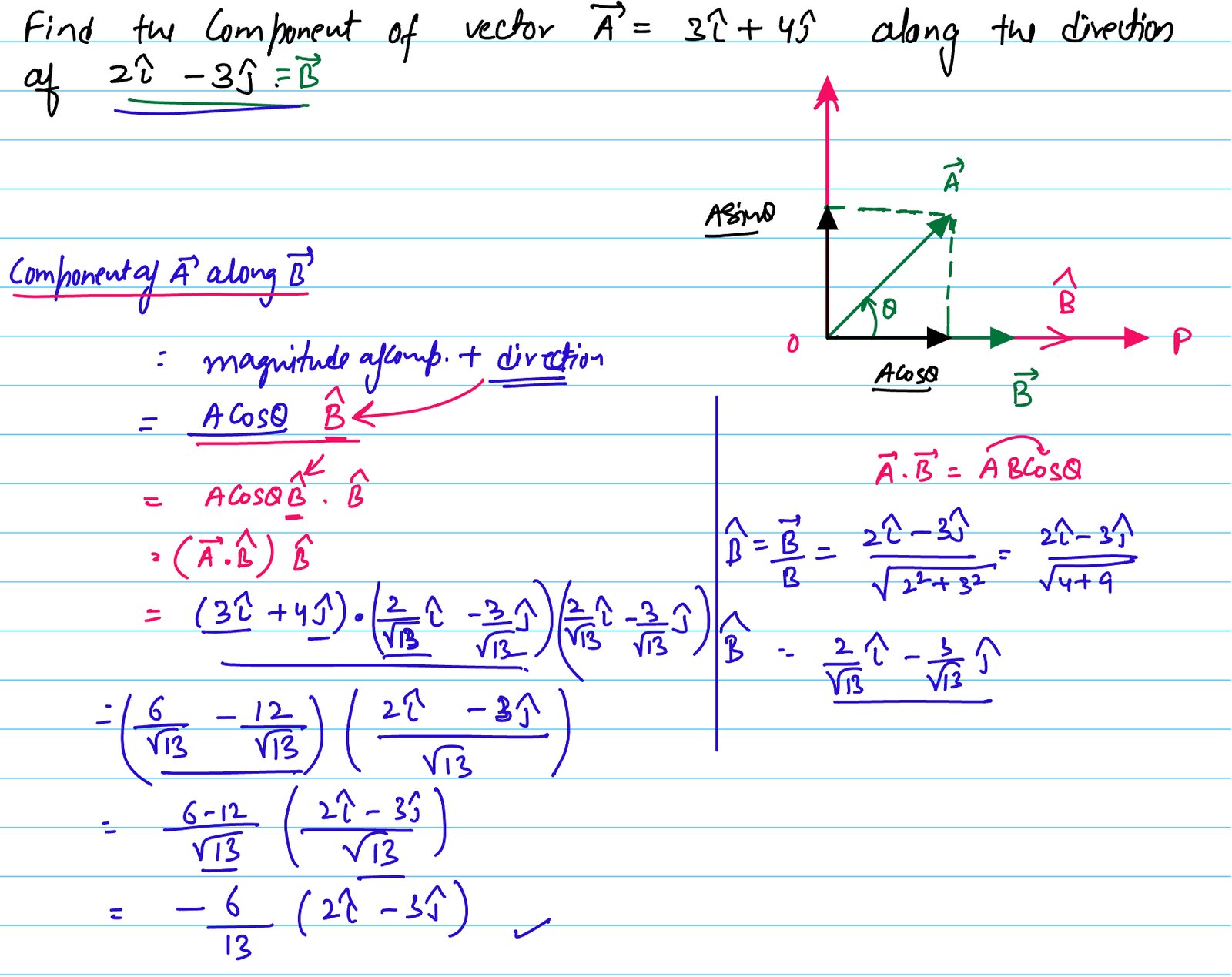
Question 11 : If vectors A, B and C have magnitudes 5, 12 and 13 units and A + B = C, find the angle between vector B and vector C .
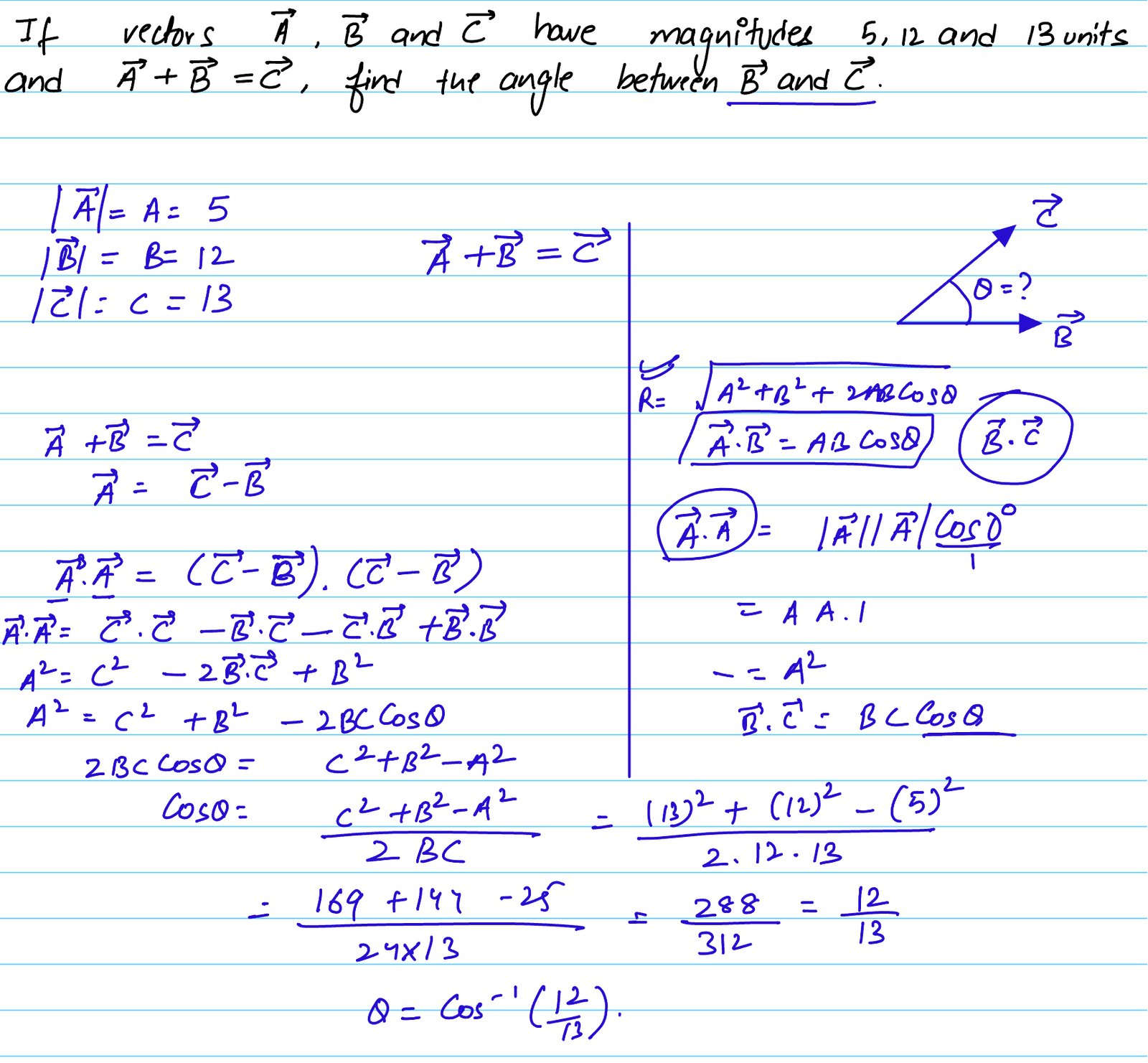
Question 12 : If unit vectors A cap and B cap are inclined at an angle theta, then proove that magnitude of ( A cap - B cap ) = 2 Sin (theta/2)
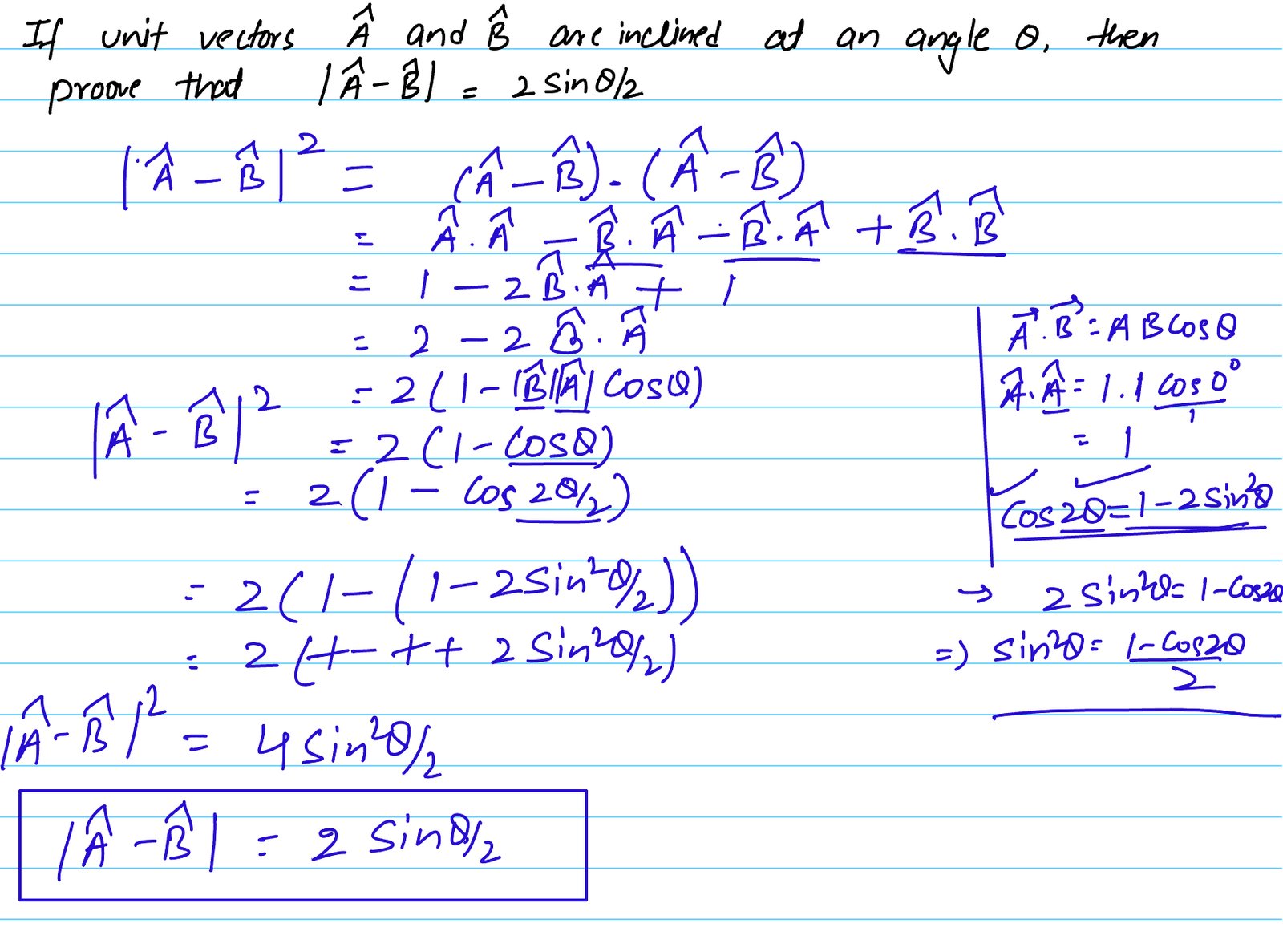
Question 13 : Find the angle between force vector F = ( 3i + 4j -5k ) and displacement vector d = ( 5i + 4j + 3k ) unit. Also find the projection of vector F on vector d.

Question 14 : Show that vectors vector A = 2i - 3j - k and vector B = -6i + 9j + 3k are parallel.
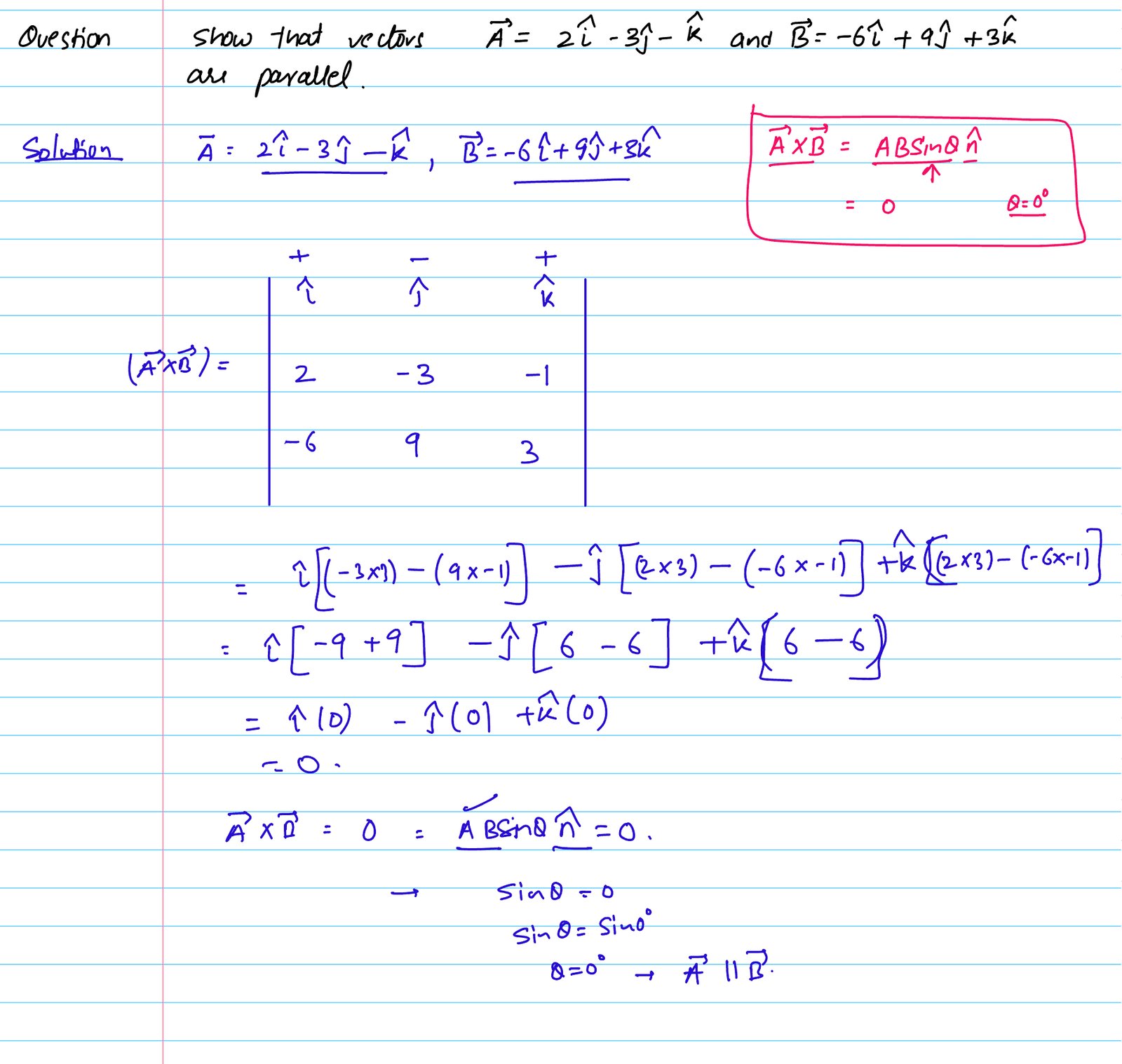
Question 15 : A particle starts from origin at t=0 with a velocity 5.0i m/s and moves in X-Y plane under action of a force which produces a constant acceleration of 3i + 2j m/second square. a). What is the Y coordinate of the particle at the instant its X coordinate is 84 m ? b). What is the speed of the particle at this time ?
